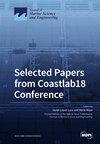WaterSAM: Adapting SAM for Underwater Object Segmentation
IF 2.8
3区 地球科学
Q1 ENGINEERING, MARINE
引用次数: 0
Abstract
Object segmentation, a key type of image segmentation, focuses on detecting and delineating individual objects within an image, essential for applications like robotic vision and augmented reality. Despite advancements in deep learning improving object segmentation, underwater object segmentation remains challenging due to unique underwater complexities such as turbulence diffusion, light absorption, noise, low contrast, uneven illumination, and intricate backgrounds. The scarcity of underwater datasets further complicates these challenges. The Segment Anything Model (SAM) has shown potential in addressing these issues, but its adaptation for underwater environments, AquaSAM, requires fine-tuning all parameters, demanding more labeled data and high computational costs. In this paper, we propose WaterSAM, an adapted model for underwater object segmentation. Inspired by Low-Rank Adaptation (LoRA), WaterSAM incorporates trainable rank decomposition matrices into the Transformer’s layers, specifically enhancing the image encoder. This approach significantly reduces the number of trainable parameters to 6.7% of SAM’s parameters, lowering computational costs. We validated WaterSAM on three underwater image datasets: COD10K, SUIM, and UIIS. Results demonstrate that WaterSAM significantly outperforms pre-trained SAM in underwater segmentation tasks, contributing to advancements in marine biology, underwater archaeology, and environmental monitoring.WaterSAM:将 SAM 用于水下物体分割
物体分割是图像分割的一种重要类型,主要用于检测和划分图像中的单个物体,对于机器人视觉和增强现实等应用至关重要。尽管深度学习在改进物体分割方面取得了进步,但由于水下特有的复杂性,如湍流扩散、光吸收、噪声、低对比度、光照不均和复杂背景等,水下物体分割仍然具有挑战性。水下数据集的稀缺使这些挑战变得更加复杂。分段任意模型(SAM)已显示出解决这些问题的潜力,但其针对水下环境的改良版 AquaSAM 需要对所有参数进行微调,需要更多的标注数据和高昂的计算成本。在本文中,我们提出了一种用于水下物体分割的适配模型--WaterSAM。受低秩自适应性(Low-Rank Adaptation,LoRA)的启发,WaterSAM 将可训练的秩分解矩阵纳入变换器层,特别增强了图像编码器。这种方法大大减少了可训练参数的数量,仅为 SAM 参数的 6.7%,从而降低了计算成本。我们在三个水下图像数据集上验证了 WaterSAM:COD10K、SUIM 和 UIIS。结果表明,WaterSAM 在水下分割任务中的表现明显优于预训练的 SAM,为海洋生物学、水下考古学和环境监测领域的进步做出了贡献。
本文章由计算机程序翻译,如有差异,请以英文原文为准。
求助全文
约1分钟内获得全文
求助全文
来源期刊

Journal of Marine Science and Engineering
Engineering-Ocean Engineering
CiteScore
4.40
自引率
20.70%
发文量
1640
审稿时长
18.09 days
期刊介绍:
Journal of Marine Science and Engineering (JMSE; ISSN 2077-1312) is an international, peer-reviewed open access journal which provides an advanced forum for studies related to marine science and engineering. It publishes reviews, research papers and communications. Our aim is to encourage scientists to publish their experimental and theoretical results in as much detail as possible. There is no restriction on the length of the papers. The full experimental details must be provided so that the results can be reproduced. Electronic files and software regarding the full details of the calculation or experimental procedure, if unable to be published in a normal way, can be deposited as supplementary electronic material.
 求助内容:
求助内容: 应助结果提醒方式:
应助结果提醒方式:


